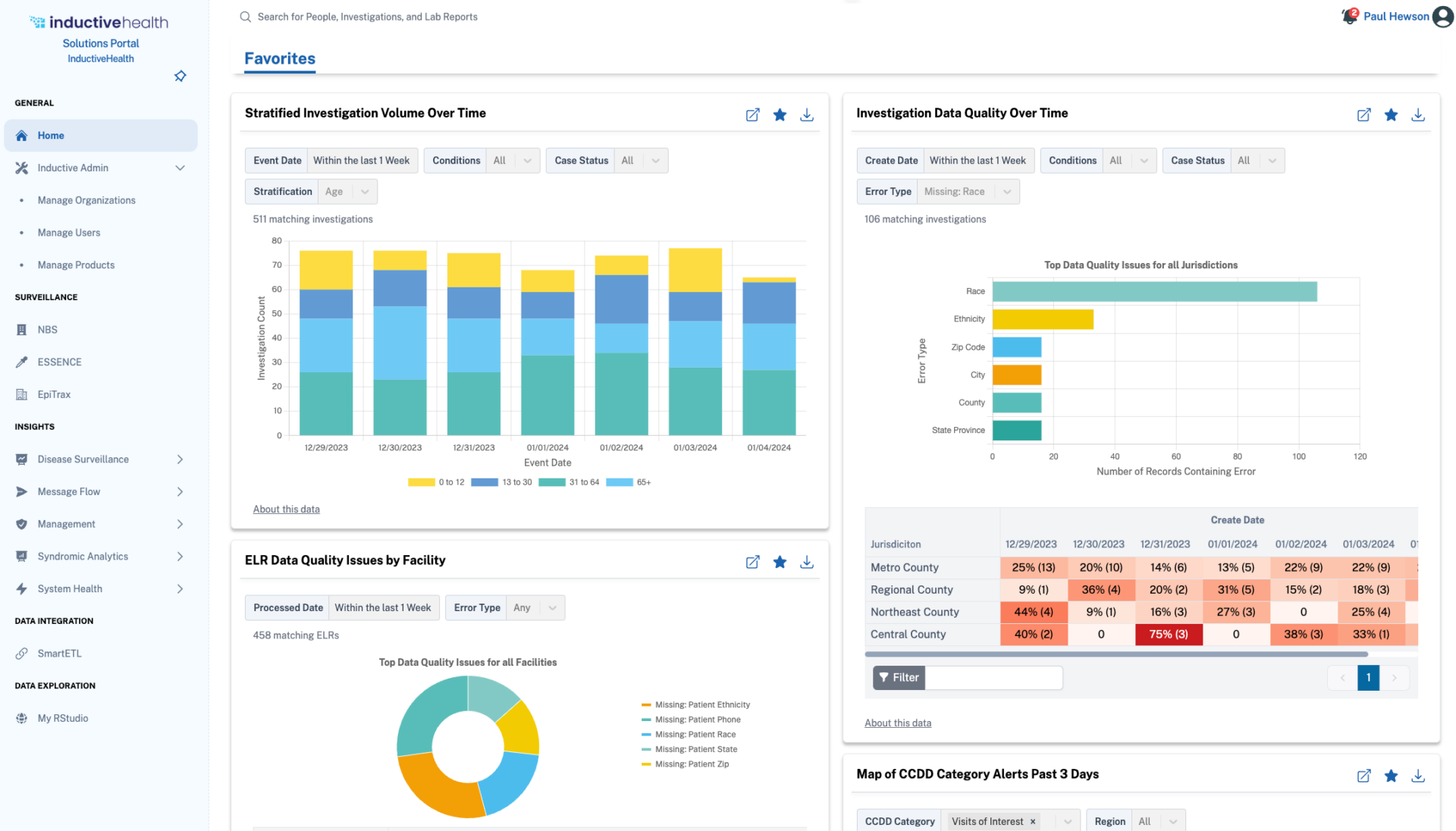A Fully Configured Surveillance Management System With Ongoing Support
This is a subtitle
A true integrated analytics and visualization system
1
Automated Data Integration:
Seamlessly ingest ELR and eCR data in real-time from multiple sources into a single interface, eliminating manual data handling.
2
Elegant Visualizations:
Produce high-quality, stakeholder-appropriate
visualizations to support decision-making processes.
3
Customized Reporting:
Save time with favoriteddashboards applying custom stratification tailored to your team’s needs for continuous surveillance.
4
Cost-Effective Turnkey Solution:
Reduce the time and effort of maintaining analytics packages, and refocus your resources on public health initiatives.
5
Resource Optimization:
Free up your Epidemiology and IT teams to focus on the synthesis and analysis of surveillance insights, rather than data management.
6
Secure Collaboration:
Real-time multi-user collaboration within a secure environment, fortified with MFA and HIPAA-compliant standard.






